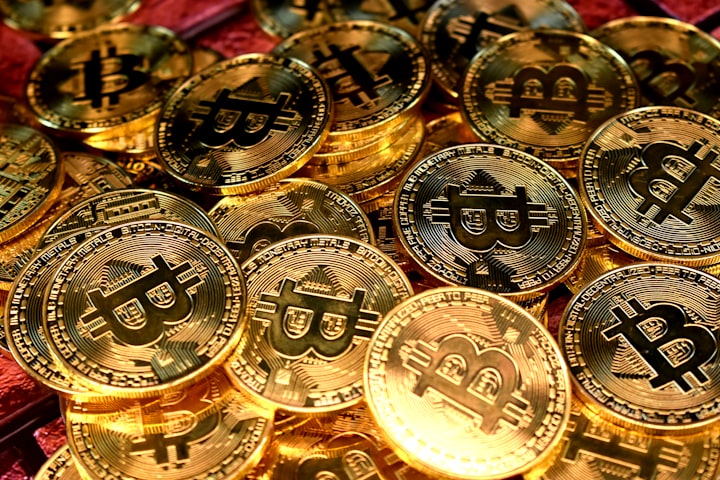Scrutinizing NFT Prices
Analyzing the price of nonfungible tokens is no small feat, but it's important if you're investing in them or a project which uses them.

NFTs are all the rage today. A lot of companies are producing NFTs, whether they're pure collectables or components of a game. Some of these NFTs can go for a lot of money. But what are the mechanics behind NFTs are their prices? The beginning and end of price is supply and demand. But what goes into supply and demand? This question really can be applied to pricing any asset, but it can have further implications for projects involving NFTs, especially NFT based games.
NFTs?
This article is largely written for those readers who already have some idea of what NFTs are. Still, it can be a bit confusing, even for people who collect them. An NFT or non-fungible token is a digital asset which is unique. It can be an asset which exists on a blockchain or not. A Hearthstone card, which isn't on chain and doesn't come with true ownership is still an NFT. So what makes something an NFT?
With most cryptoassets, such as a bitcoin, every bitcoin is identical and tradable for any other one. But an NFT, or any non-fungible asset, has some level of identity which is separate from all other assets, even if they're in the same class. A house is an example. Houses are not identical. They cannot simply be exchanged as if they are all the same.
Still, a lot of NFTs are very similar to one another. A TCG may have a lot of the same kind of card, but they're all still considered NFTs. Why? At the end of the day, each card still has its own "life history" which makes it unique.
Supply
For a physical asset, supply is generally limited by the number of people who can produce a product and the price and availability of materials needed to build it. Even for raw materials like gold, there are limitations caused by the number of known veins, the number of mines in operation, and so forth. However, digital assets usually aren't constructed using resources. They're minted using a contract, either at a set rate, or as users pay to have the asset minted.
Demand
There are many inputs for demand. Supply itself can be an input. Perceived scarcity can increase the demand of a product, especially when combined with solid marketing. Diamonds are a perfect example. The actual supply of diamonds is massive, but it's hoarded by a few companies and made to appear scarce. This scarcity and luxury status of diamonds increases their demand.
NFT creators handle this demand input by creating various rarities of the NFT. For digital trading card games, you'll often have regular and foil cards as well, or even different kinds of foil cards.
Utility is the next broad component of demand. The more useful a resource is, the more people are going to demand it. Gold isn't just in high demand because it's pretty and and luxury. It's useful. It's used to make things like jewelry, but also electronic equipment and even medicines!
Methods of Improving NFT Price/Health

In order to create a healthy system of NFTs, a publisher needs to take into account these concepts of supply and demand, and the underlying inputs and outputs related to them. By doing so, they can make collecting more profitable for everyone, and more fun as well.
Limiting supply is of course one of the most obvious ways to increase price. But it can be frustrating for a player who can't get the asset they want for a game, because the supply is too limited. It can also be difficult to decide how limited the supply should be in the first place. Still, if NFTs for card games are being generated from packs, the pack quantity per season should be limited.
However, there is an even better way to limit supply, and it is unique to digital assets, including blockchain based NFTs. Unlike with a regular physical asset, we can take assets of the same type and fuse them together to make something new. Either the assets can be used to create an entirely new asset, or they can be used to level up. Splinterlands takes this approach. Gods Unchained does as well, but only through increasing "shininess."
Creating more utility for the NFT is a demand side method of increasing token health and price. I'll again use Splinterlands as an example here. In Splinterlands, a card can be regular or gold. Just having a gold card is nice, because it's pretty, and rare, so the luxury element plays a role in the price. However, a key benefit of gold cards is that they increase the DEC rewards for wins.
Pauper leagues and luxury leagues increase value for assets that are otherwise weak or too strong respectively. Creation of leagues separating NFT strength helps reduce the issue with pay to win and also creates more options for players, increasing the demand for all assets. Dividing players into leagues and limiting what cards can be played in each league is also just a great way to keep players happy.
Art & Collectibles

I'll admit, I'm not a huge fan of NFT collectibles that are simply collectibles. When a person buys digital art in NFT form, they're really just buying a piece of data which says "you own this thing" but there is no real thing there. There is no actual painting, no collectible, nothing that can be put on a shelf. If the entity which issues the collectible goes out, all you have is a number. While that's technically true with NFT based games as well, at least the asset has use so long as the game is in operation.
Further Reading
The risks associated with a company going out of business and thus making the NFTs useless is a problem, but it is a problem that can be addressed specifically when an NFT is on chain. Because there is still at least a record of ownership of the asset, a third party can incorporate NFTs into their own projects.
About the Creator
Daniel Goldman
Visit my homepage. I am a polymath and a rōnin scholar with interests in many areas, including political science, economics, history, and philosophy. I've been writing about all of these topics, and others, for the past two decades.







Comments
There are no comments for this story
Be the first to respond and start the conversation.